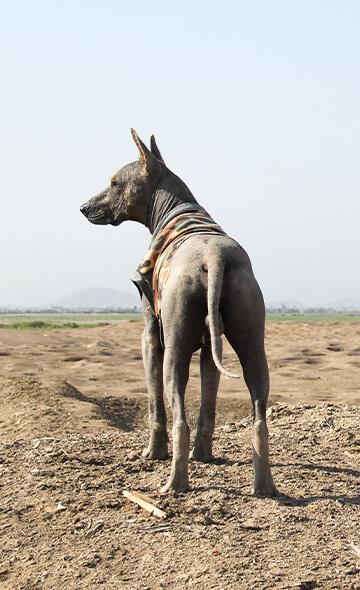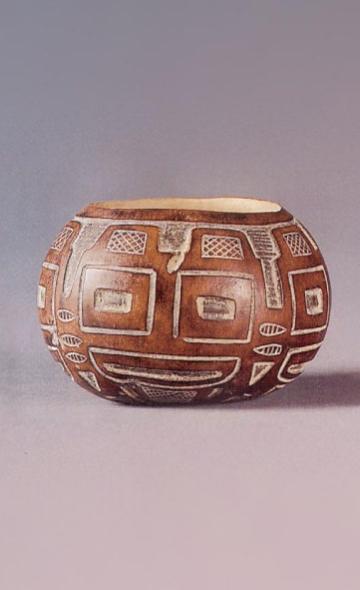- Visitors
- Researchers
- Students
- Community
- Information for the tourist
- Hours and fees
- How to get?
- Virtual tours
- Classic route
- Mystical route
- Specialized route
- Site museum
- Know the town
- Cultural Spaces
- Cao Museum
- Huaca Cao Viejo
- Huaca Prieta
- Huaca Cortada
- Ceremonial Well
- Walls
- Play at home
- Puzzle
- Trivia
- Memorize
- Crosswords
- Alphabet soup
- Crafts
- Pac-Man Moche
- Workshops and Inventory
- Micro-workshops
- Collections inventory
- News
- Researchers
- Dogs in Pre-Hispanic Peru
News
CategoriesSelect the category you want to see:

International academic cooperation between the Wiese Foundation and Universidad Federal de Mato Grosso do Sul ...

Clothing at El Brujo: footwear ...
To receive new news.
Por: Mary Ávila Peltroche
By: Mary Ávila Peltroche
We have always seen dogs as our faithful companions, those pets that are by our side, that become avid guardians and that we consider as part of the family. But, have you ever wondered what life was like for these animals and how they were seen in Pre-Hispanic Peru?
The antiquity of the dog
Dogs (Canis lupus familiaris) began to be domesticated approximately 30 000 years ago (Germonpré, et al. 2009), reaching the American continent around 15 000 years ago (Perri, 2019). In the Andes, the earliest evidence was found in the Telarmachay cave (6000-5000 BC), where bones of dogs mixed with bones of other mammals are recorded, in addition to possible offerings (Lavallée, 1996). These first evidences already denote a close relationship between these animals and humans.
Detail of a puppy's footprint in Moche adobe, Huaca Cao Viejo.
Native breeds and varieties
At present, it is considered that in ancient Peru there were 2 breeds of dog and at least 2 varieties of them: The Peruvian hairless dog (with its variety with hair) and the Chiribaya shepherd, one breed with a short snout and another with a long snout (Luz Segura in Estremadoyro, 2017). However, nowadays, the only breed considered by the International Canine Federation (ICF) is the Peruvian Hairless Dog (PPSP). Despite this, in pre-Hispanic art we can see representations of these animals showing the different varieties.
Print of a human foot, below, and of a puppy above, next to the scale. Clearly, the footprints were placed when the adobe was still fresh, before drying. These adobes were part of a construction fill in the upper part of the Huaca Cao Viejo, between the years 500 and 800 AD.
Times, usages, customs and representations
During the Moche epoch (100-800 AD), the presence of a medium-sized dog with white/cream fur and dark spots was common. Although it is difficult to identify and characterize this race, its role within Moche society seems to be that of a constant companion of human beings. It is represented in the iconography accompanying the main and/or supernatural personages in events of transit to death or in hunting scenes. In the Andes, there are sacrificed dogs or representations of them in burials. Such is the case of the tomb of the Lord of Sipán and sculptural vessels of the aforementioned variety in a tomb found in the Huaca Cao Viejo, a custom that resembles the situation of the Xoloitzcuintle dogs in Mexico.
The scarce presence of representations of hairless dogs in Moche art leads us to think that these were not common or that they simply did not fulfill a preponderant role within the scenes being represented. On the North Coast, during the Lambayeque and Chimú epoch (900-1375 AD), these animals were paid greater attention, as they appear represented on the vessels with traits that are easily identifiable.
Although we cannot rule out that these animals could have lived along the Central Andes, that is to say, the majority of the territory that Peru occupies today, they appear more frequently in the art of pre-Inca coastal peoples. Societies such as Lambayeque, Chimú and Chancay were able to depict these dogs in their art, generally shown with their suckling puppies, and in a sitting position.
Native dogs during the colonial period
After the arrival of the Spanish, Peruvian dogs were marginalized, especially hairless dogs, to such an extent that they were in danger of disappearing as a breed. This was mainly due to their physical appearance, which was considered grotesque compared to European dogs. Different chroniclers make descriptions of these, among them Bernabé Cobo, who describes them thus: "small, ugly, and repugnant, because they do not have hair, but a bare skin, almost like the human, which are disgusting to see." However, Peruvian hairless dogs managed to remain until today, and from 1985 they were incorporated as an official breed at the ICF, becoming part of the Cultural Heritage of the Nation since the year 2000.
The Native Dog: Living Testimony of Andean History
The presence of dogs within the main areas of social life in ancient Peru is reflected in the various uses that these animals were given. Their territorial character makes them excellent guardians and shepherding animals for herd control. In addition, due to the intimate relationship with people, they fulfilled different roles within the customs of the peoples.
Of these pre-Hispanic animals, we have different archaeological evidences, such as bones, iconographic representations and other very particular ones, such as the recent finding of a dog's footprint in an adobe used in one of the construction phases of the Huaca Cao Viejo. The imprint of a pre-Hispanic dog’s stepping paw in the production of adobes is a sign of the constant accompaniment of these animals in the daily activities of the Moche people. Furthermore, the presence of these dogs is a testimony of the historical processes of adaptation to different situations and conditions, always hand in hand with human groups on their long journey of transformation of the Andean territory, generating a close bond that began thousands of years ago and which continues to this day.
Researchers , outstanding news



